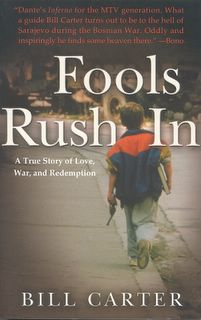
Chico State marketing professor encourages customized Web sites for the global economy
By DAN BARNETT
Let's say your company has expanded beyond U.S. borders and now has locations around the world. Let's say the company has invested hundreds of thousands -- maybe millions -- of dollars in setting up a Web site designed to attract customers. The home page is designed around the green in the firm's logo and looks pretty attractive with its angular design and pictures of men and women together enjoying the company's products. Your company has a winning Web site, right?
Well, probably not. Take color, for instance. For some in Malaysia green symbolizes "the jungle with its dangers and diseases." The company is a hit in Egypt, where green symbolizes fertility, but a flop in France, where it symbolizes criminality. There are lots of other problems, too, all detailed in a fascinating new book, "The Culturally Customized Web Site: Customizing Web Sites for the Global Marketplace" ($29.95 in paper from Elsevier Butterworth-Heinemann). Co-authors Nitish Singh (Associate Professor of Marketing at Chico State University) and Arun Pereira (Associate Professor of Marketing, St. Louis University in Missouri) have also developed a Web site of their own: www.theculturallycustomizedwebsite.
Both Singh and Pereira have contributed extensively to academic and marketing journals, but their book is far from arcane; it's suitable not only as a classroom text and a guide for those managing commercial Web site development, but for the general reader as well. The authors present controversial claims with generosity and tact, and their survey of research in the field and the findings of their own original research with consumers, from Italy, India, the Netherlands, Spain and Switzerland, all lend credence to their thesis.
Simply put, the authors believe that Web sites that are adapted to the particular perceptions, symbols and behavioral expectations of individual countries will be more successful in getting their message out or selling their wares than sites not so adapted.
Isn't this just obvious? Not really. Some companies maintain that the globalization of commerce leads to more and more cultural commonality; but Singh and Pereira point out that, on the contrary, "Web sites that are customized to specific countries enjoy strong advantages compared with those that are not." The trouble is that in 2004, when the book was written, the authors could find no Web sites that met their criteria of cultural customization. Coming closest are the "localized" and "highly localized" sites. For example, dell.com "provides country-specific Web pages along with translation into the relevant language"; amazon.com goes beyond that with country-specific sites that include not just translations but careful attention to a country's "time, date, zip code, number formats" and the like.
At the other end of the spectrum, some companies, such as tyco.com, examined in 2004, "offers one, standardized Web site in English for all of its customers" even though the company operates in more than 100 countries.
But with that approach cultural insensitivities can abound. The original Apple Macintosh "trash can" icon was confusing to those in England "because it was a cylindrical bin, shaped exactly like mail boxes in Britain." The swastika is an ancient Hindu symbol of good luck and well-being that is common in India. But outside of India it refers to genocidal Nazism. A one site fits all approach just won't work.
Or try this: "A group of senior citizens from the U.S. and India were asked to visualize the following statement: A lady dressed in white, in a place of worship.' A majority of the Americans visualized a bride at an altar. A majority of the Indians visualized a widow in prayer. In most Western countries, brides dress in white; in India and many parts of Asia, brides traditionally do not wear white, but widows do."
The authors admit that such cultural differences are being modified in the new economy, but they claim that countries still exhibit identifiable (though not stereotypical) differences in a complex mix of five cultural values: individualism/collectivism, uncertainty avoidance, power distance, masculinity/femininity and high/low context.
For example, "if high uncertainty avoidance value is combined with individualism (as in the case of Germany), it is reflected in a communication style that is structured, explicit and straightforward (low context), whereas if high uncertainty avoidance is combined with collectivism (as in Japan), it is reflected in a communication style that is rooted in tradition and relies on implicit rules and codes (high context)."
Web designers need to know this. And maybe so do we.
Dan Barnett teaches philosophy at Butte College. To submit review copies of published books (no manuscripts please), or to make comments, please send e-mail to dbarnett@maxinet.com. Copyright 2005 Chico Enterprise-Record. Used by permission.





